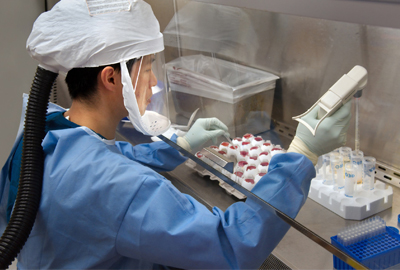Symptoms
The most common symptoms of COVID-19 are:
Cough
Fever or Chills
Shortness of Breath
What are the differences and similarities between Influenza (flu) & COVID-19?
Influenza (flu) and COVID-19 are both contagious respiratory illnesses, but they are caused by different viruses. COVID-19 seems to spread more easily than the flu and can cause more serious illnesses in some people. Compared to the flu, COVID-19 symptoms can take longer to show and people can be contagious for longer as well.
Symptoms for flu and COVID-19 are similar, so testing is needed to confirm a diagnosis.
The CDC has more information about the similarities and differences between the flu and COVID-19.
The virus is spreading rapidly in our communities. If you aren’t feeling well, regardless of whether or not you are vaccinated, you may be infected with COVID-19. Do not dismiss your symptoms. Stay home and get tested after your symptoms start.
If you were exposed to someone who has the virus – regardless of whether or not they have symptoms–you may be infected. It’s important to avoid contact with others and get tested 5 days after exposure. Learn how to get tested safely and conveniently.
People with COVID-19 have reported a wide range of symptoms – ranging from mild symptoms to severe illness. Symptoms can appear 2-14 days after exposure. People with these symptoms may have COVID-19:
- Fever or chills
- Cough
- Shortness of breath or difficulty breathing
- Fatigue
- Muscle or body aches
- Headache
- New loss of taste or smell
- Sore throat
- Congestion or runny nose
- Nausea or vomiting
- Diarrhea
In addition, a significant percentage of infected people are asymptomatic – or have no symptoms.
When to seek emergency medical attention
Look for emergency warning signs for COVID-19. If someone is showing any of these signs, seek emergency medical care immediately.
Emergency warning signs include:
- Trouble breathing
- Persistent pain or pressure in the chest
- New confusion
- Inability to wake or stay awake
- Bluish lips or face
Call 9-1-1: Notify the operator that you are seeking care for someone who has or may have COVID-19.
What to do if you have COVID-19 symptoms
Isolate for 5 days
- Whether or not you get tested–and even if you test negative–stay at home if you have any symptoms of COVID-19.
- Monitor your symptoms for 5 days from the time they start or 10 days from the last date of exposure to an infected person.
- Wear a well-fitted mask for 10 full days when around others inside your home and indoors in public.
Who should get tested?
If you have COVID-19 symptoms.
- If you can easily get a PCR or home test, you should do so.
- If you can’t easily get a test, assume you have COVID-19 and act accordingly—isolate for at least 5 days and let your contacts/employer/school/healthcare provider know.
If you have been exposed to someone with confirmed COVID-19.
- Test at least 5 full days after your last exposure even if you don’t have symptoms.
Even if you do NOT have symptoms of COVID-19, but you:
- are prioritized for testing (e.g. hospitalized patients, residents in long-term care facilities).
- need it for travel requirements.
- have taken part in activities where physical distancing was not possible.
- have been asked or referred to get testing by their school, workplace, or healthcare provider.
Who should not get tested?
If you have been a close contact at home and have symptoms
- Treat yourself as a positive and isolate.
If you have been recently released from isolation after having COVID-19
- You may continue to test positive for up to 90 days.
- A repeat test is NOT recommended for returning to work.
Anyone who has recently had a positive test and want to double check whether you are ‘really positive’
- If you test positive—just once— isolate for at least 5 days and let your contacts/employer/school know (this includes for at home, or over the counter tests.).



